|
LabGuy's World: NBTV - 32 Line Televisor Color Conversion - Part 2
[HOME] [ELECTRONICS PROJECTS] [PART 1] What would Tim Taylor do? Oh! Of course. MORE POWER! 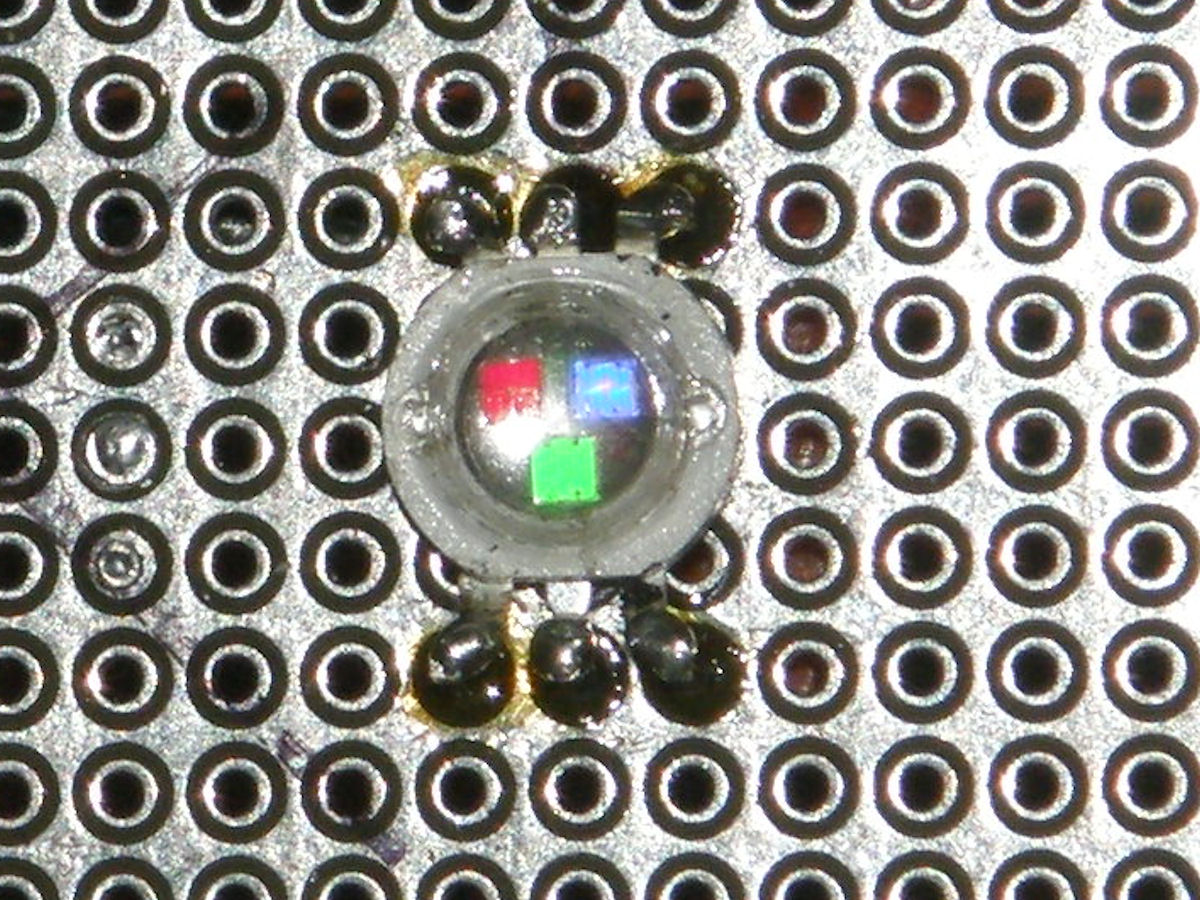
The improved color LED light source, 3 one watt diodes in one package - 20160207 After a long absence, we return to this project. I have purchased some 3W RGB LEDs to replace the panel indicator type I used earlier. The advantage of these new LEDs is that all three emitters are in a single package. This dramatically improves the color blending. At the very high power level of these lights, I can use a more aggressive diffuser as well. There is enough light coming from this source to literally blind a person. During testing, I was left with floating spots in my vision for many minutes afterward! Since my last visit to this project, of course, I misplaced the hook up cable that goes from the Aurora World Converter to my LED driver board. I will be reordering the missing mini-DIN connectors from Digi-Key. The part number of the plug for the analog RGB mechanical TV output port is Digi-Key part# CP-2070-ND. The other two mini-DIN port connectors on the world converter are part numbers CP-2050-ND and CP-2080-ND for 5 and 8 pin plugs respectively. About two dollars each. 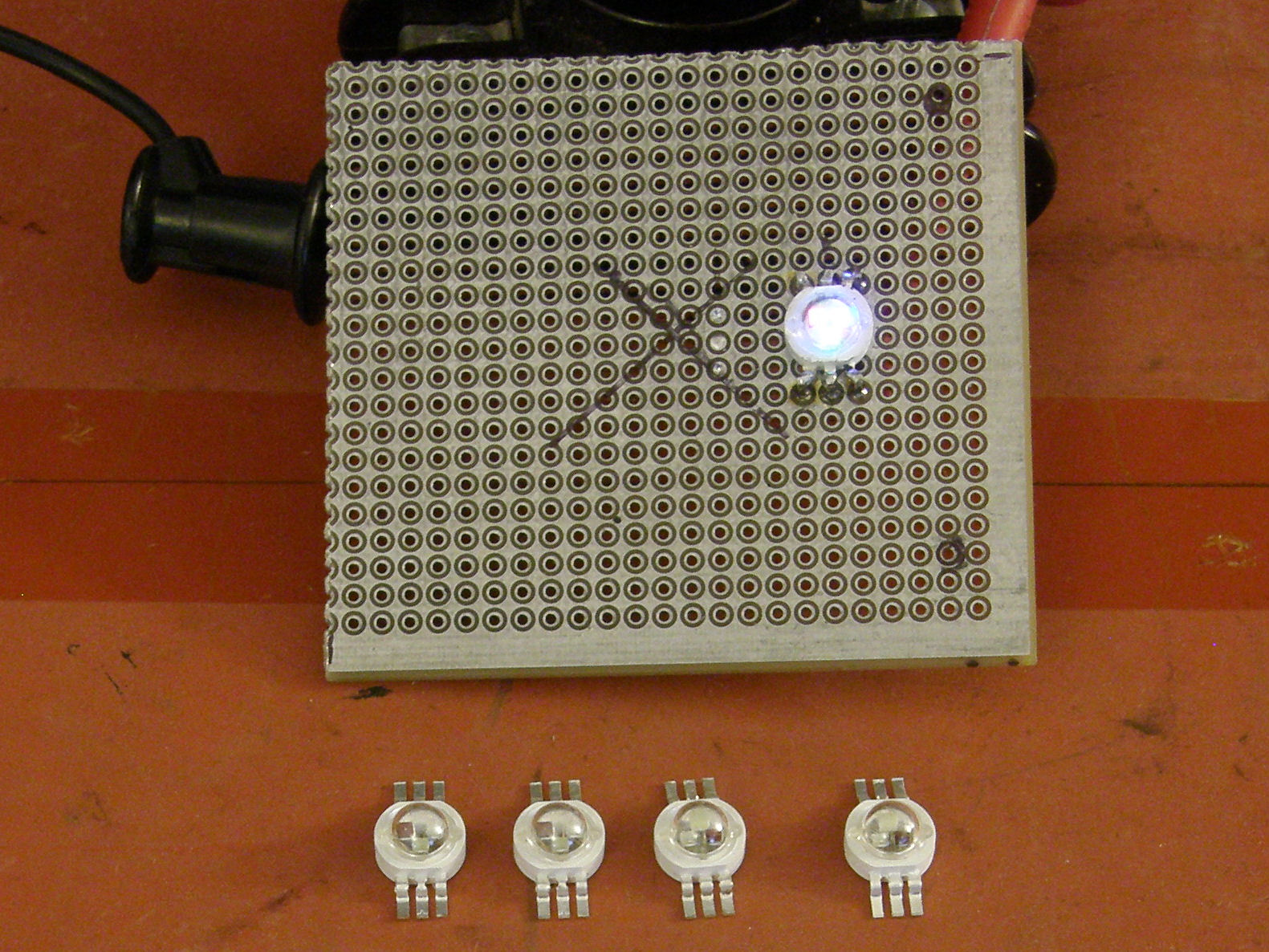
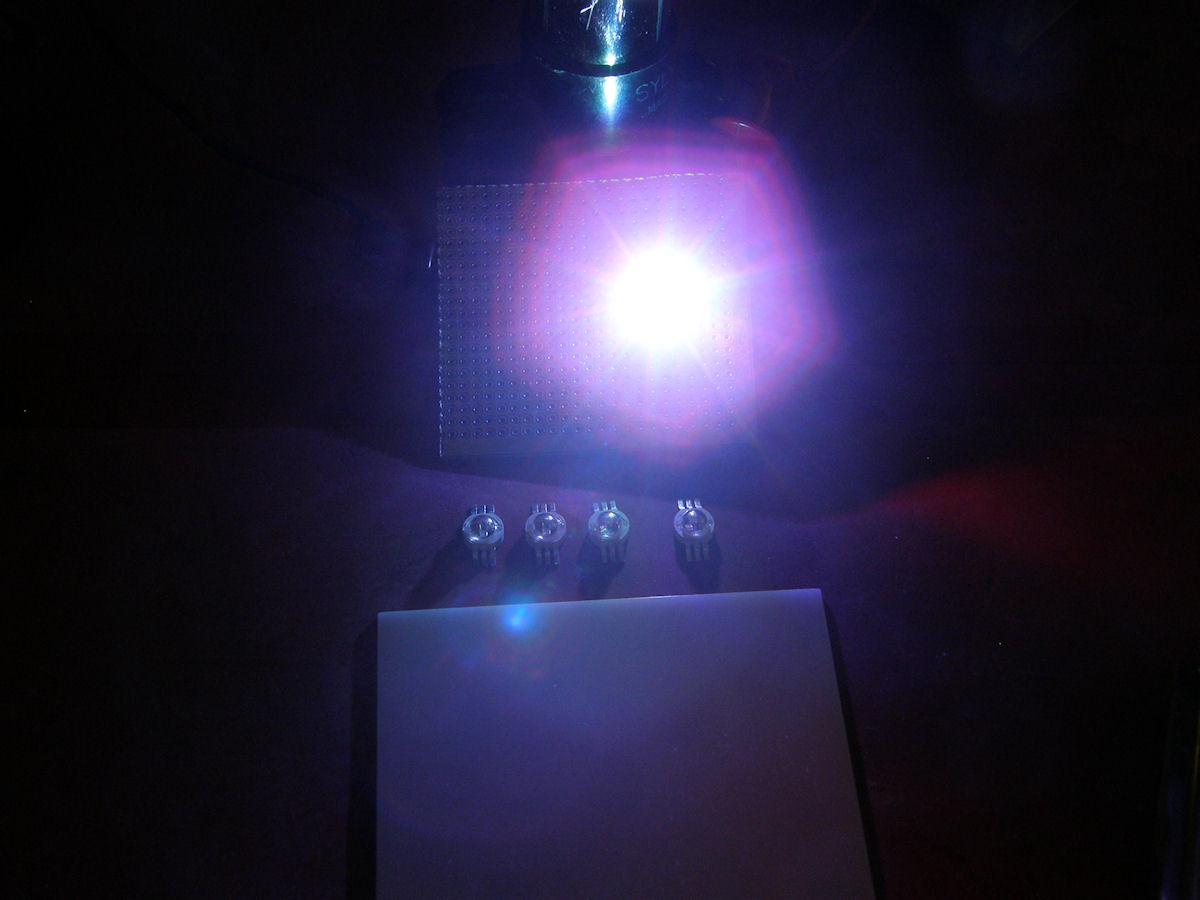
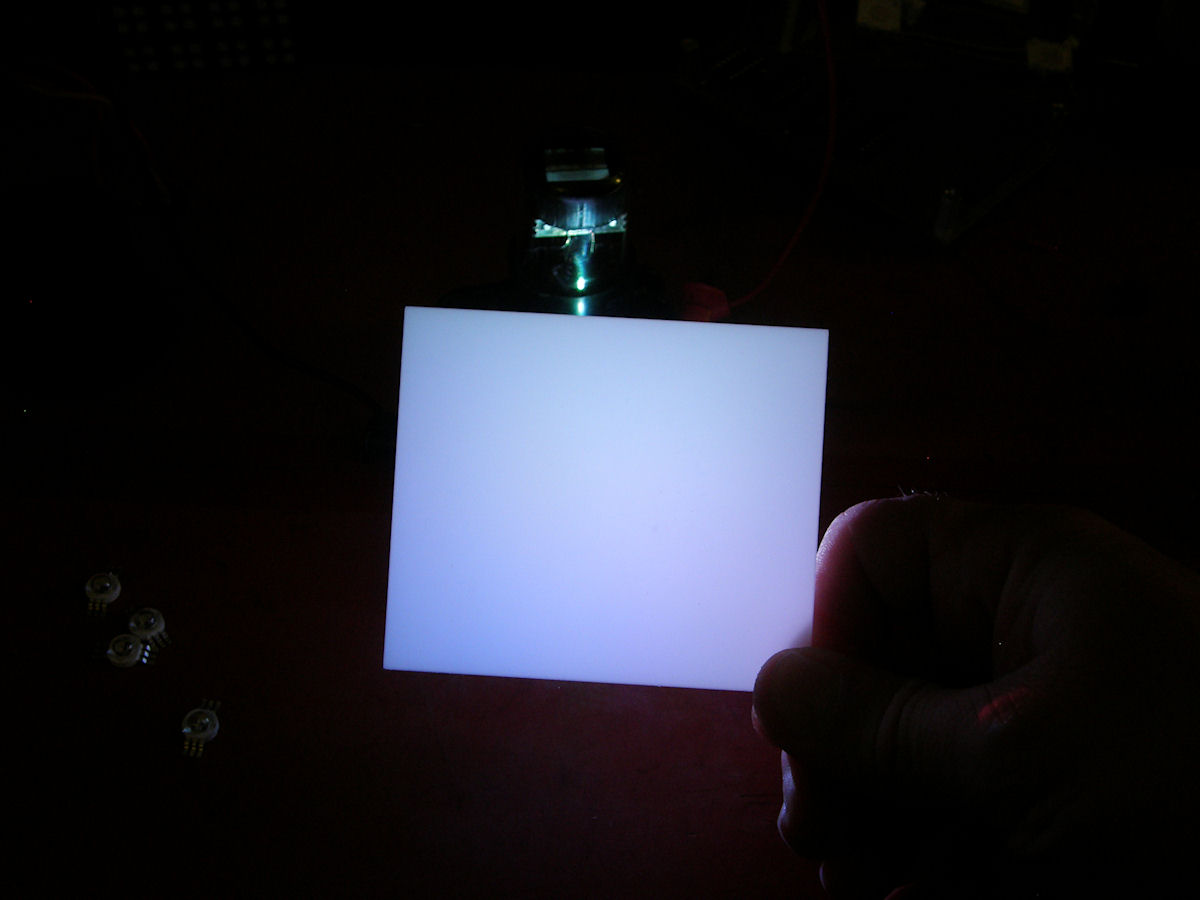
Five pieces for less than $10 on Ebay Very bright and diffuses evenly - 20160207 The photos can not convey how bright this lamp is. Each of the LEDs is rated for a maximum current of 350 mA. In the center photo, the LEDs are running on about 75mA. Absolutely dazzling. Seeing spots afterward too! As you can see, all of the color contaminition of the earlier light source is gone. 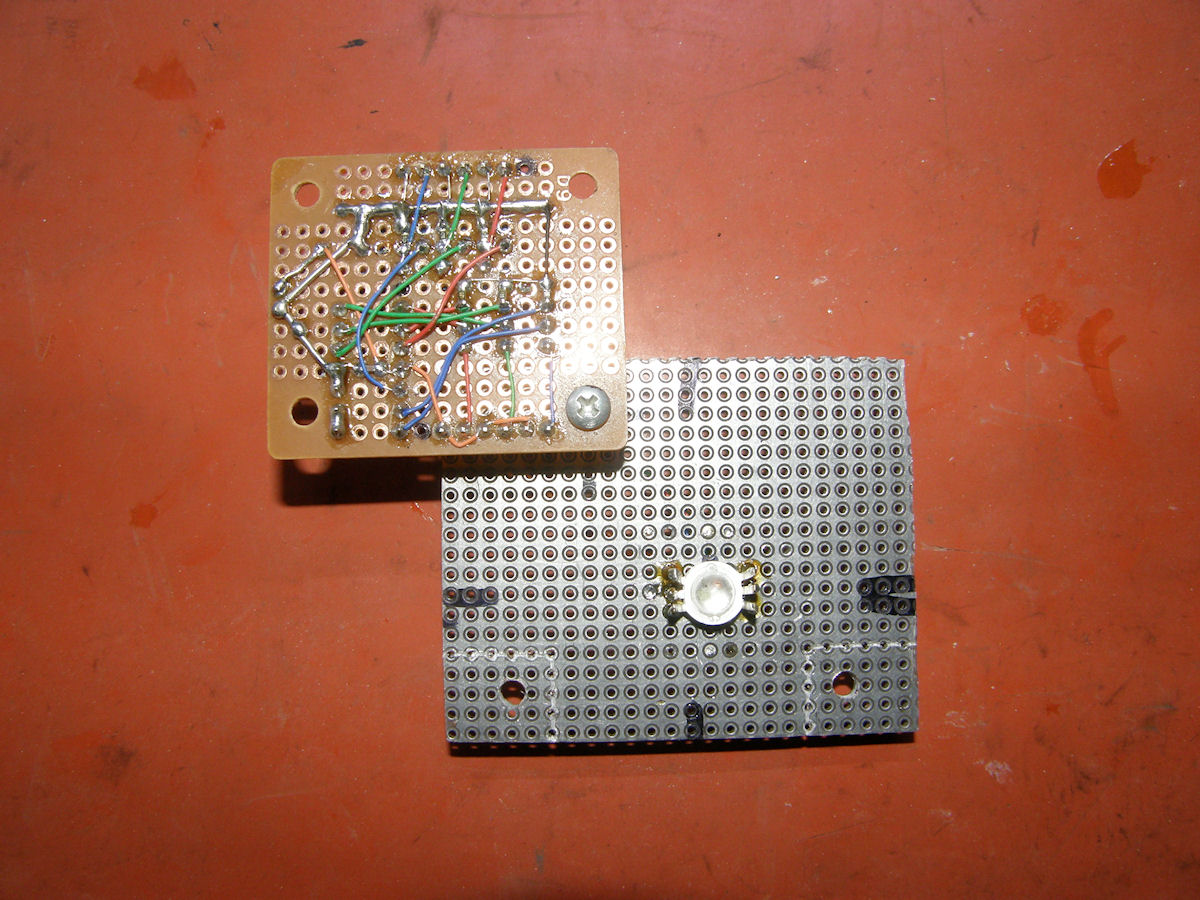
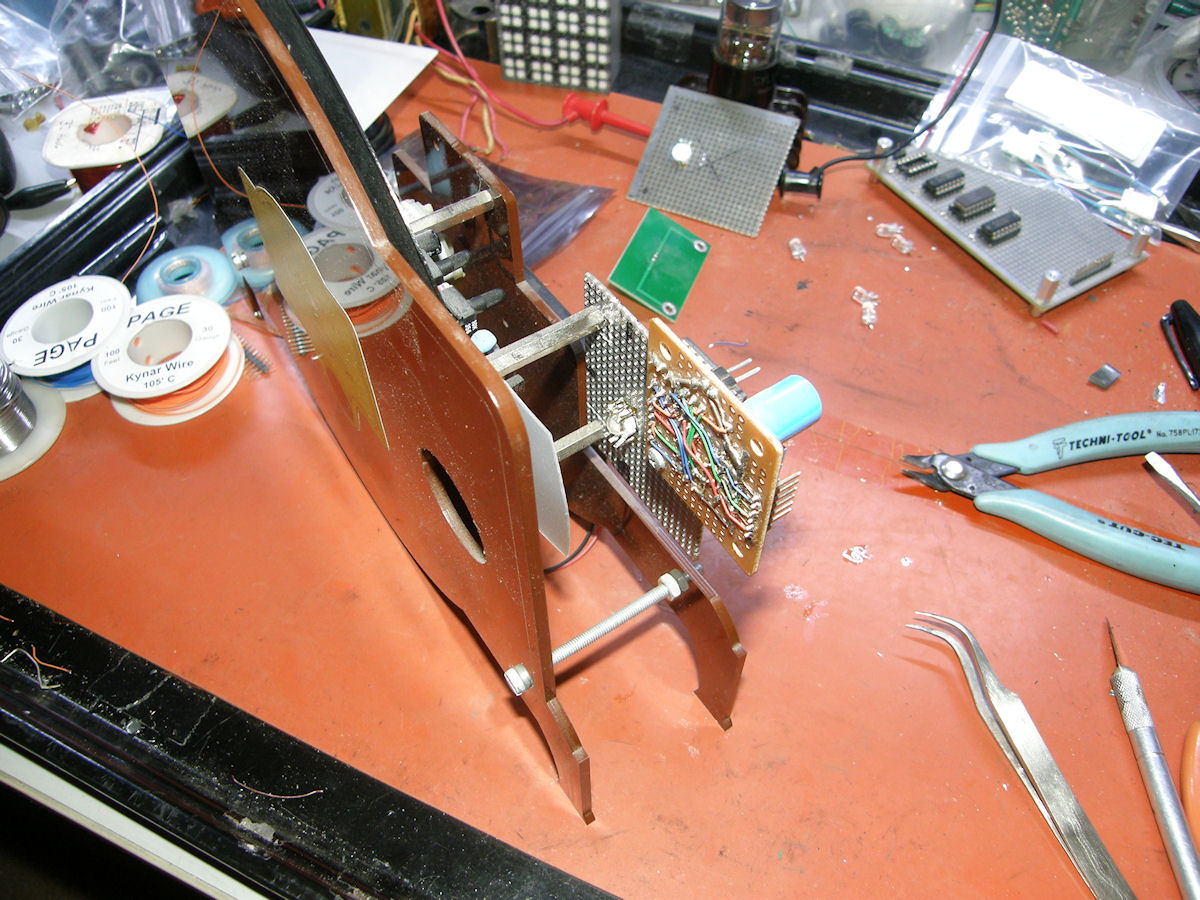
New high power LED installed in original circuit and on the MUTR Televisor - 20160207 Since I was getting absolutely blinding light at such low current, I decided to install one of the new LEDs on the original board. That board can drive up to 100mA into each LED. Apparently more than enough. It can be easily modified for higher current if necessary, though I will have to upgrade the output transistors. 
MUTR Televisor and Aurora World Converter block diagram - 20160207 Component NTSC video from the DVD player is sent to the Aurora World Converter. The incoming color video is converted to 32/12.5 NBTV video standard monochrome and is sent out the World Converter's composite video output jack. Simultaneously, RGB video is outputted from the World Converter and routed to the RGB LED drvier board. The composite video signal provides the sync for the nipkow disk. The RGB driver board changes the incoming 0 to 1 volt RGB video signals into 0 to 100mA (or more) LED drive currents. As soon as I can replicate the missing cables, I will publish photos of the results. As always, stay tuned. 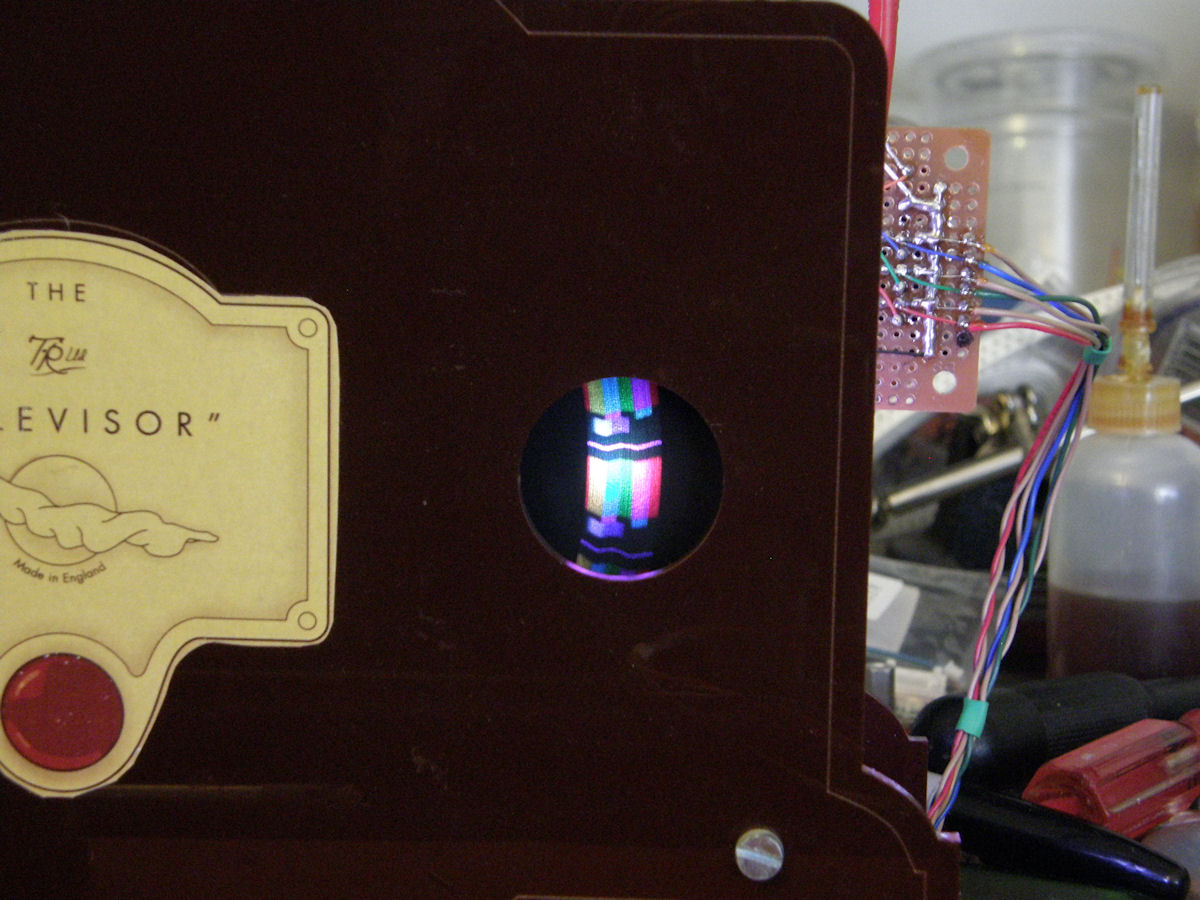
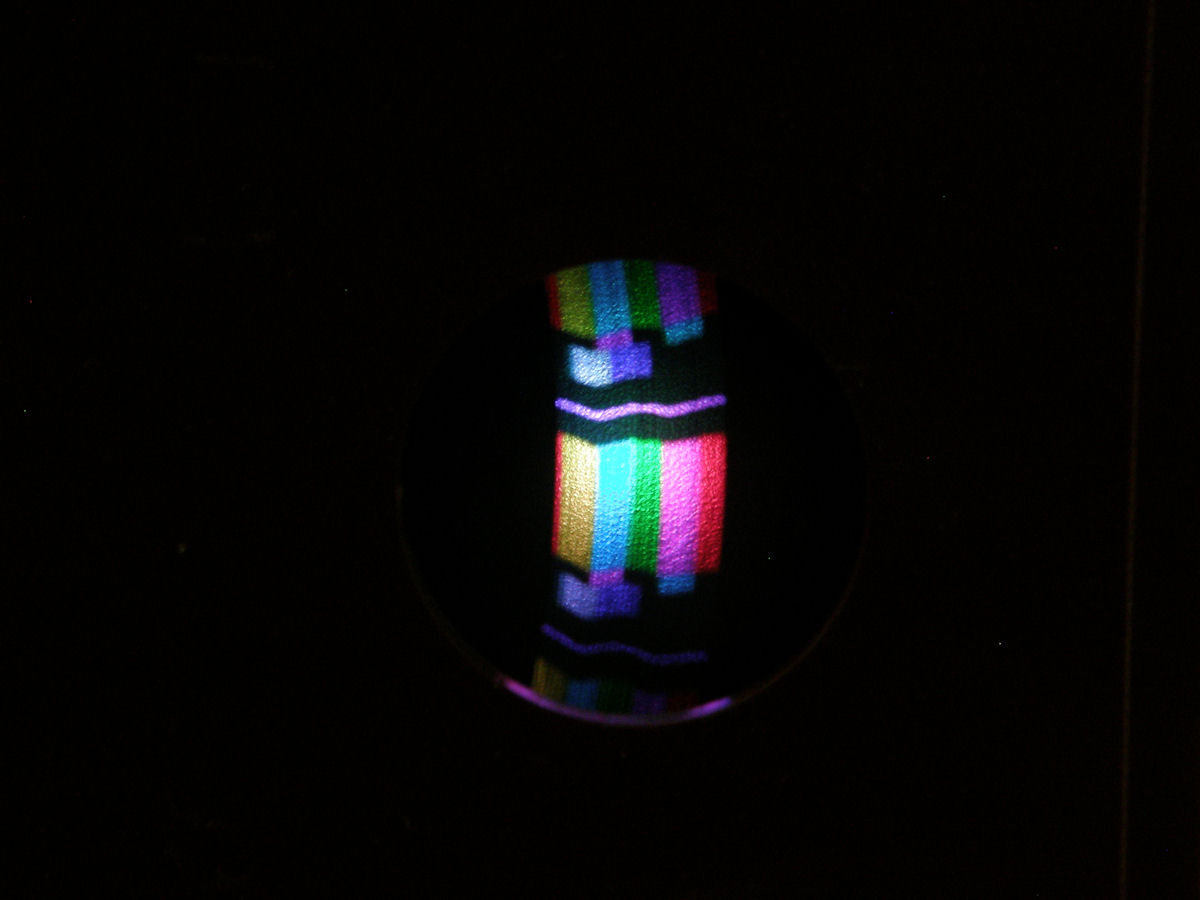
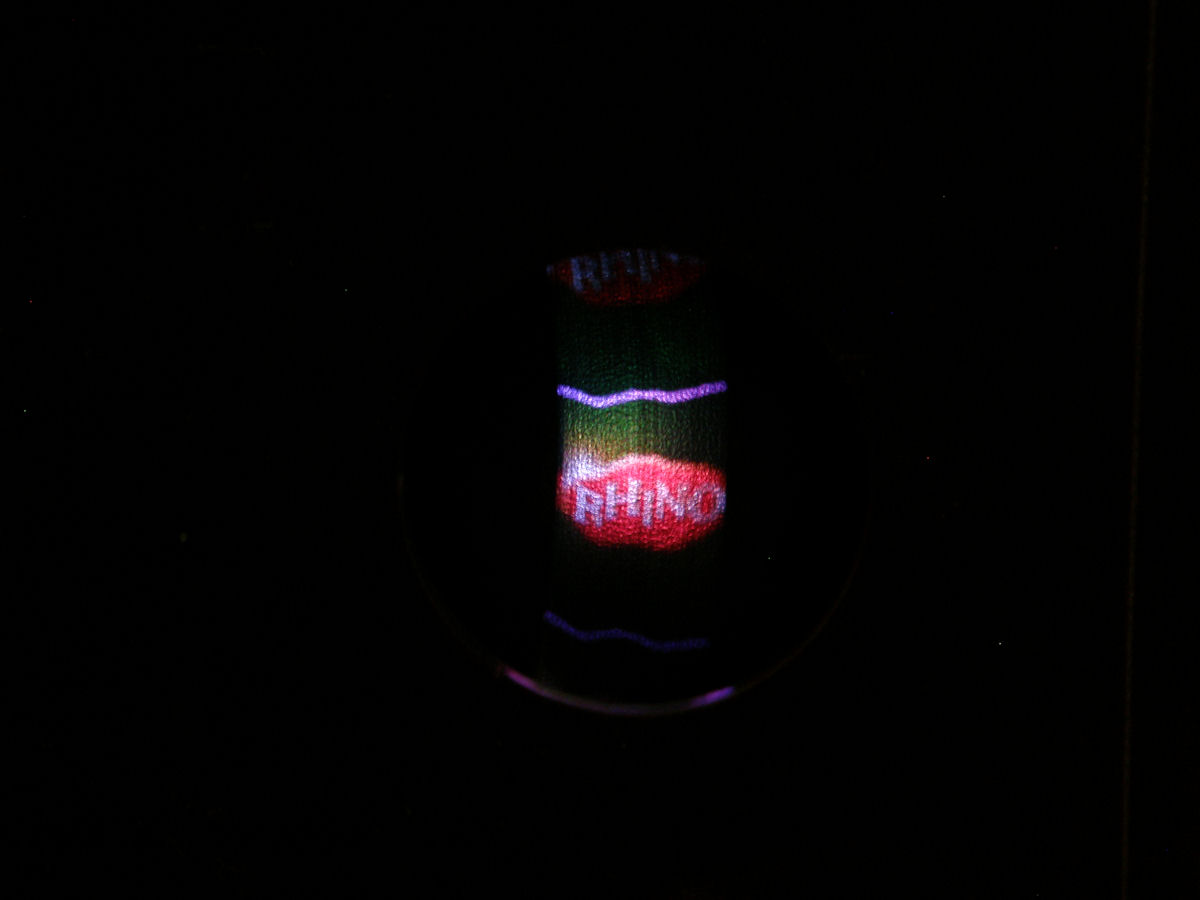
New cables complete? Check! New LED working? Check! Color pictures? Check! - 20160213 As so often happens, all the new parts fell into place and success ensued. Put it all together last evening. Performed the usual troubleshooting. Got the Televisor working. The new LEDs are so bright, they can't even be operated anywhere near their rated power. The picture is too bright to look at. Dazzling bright! For normal viewing, about 15mA per LED is the maximum. For photography, the contrast is turned down to about 3mA per LED. Golly! They sure are efficient. All currents very roughly estimated, not measured. There are a couple of image artifacts I need to explain. The first one is this funny pebbly texture in the sharply focused images above. That is the surface of the diffuser behind the Nipkow disk. My digital camera focuses on that plane because it is the brightest and most stationary thing in the scene. That brings up the second artifact. Note how horizontal straight lines have a "W" shaped distortion to them. The disk edges are cyclically moving above and below the median plane of the disk, twice per rotation. The result is as if the image were projected on vertically pleted drapes. In the simplest terms, my Nipkow disk is warped and fluttering in the breeze. It is made a very thin flexible plastic sheet material that has become distorted with time. It may "spin out" to flat again. Or not. Time will tell. It may be worth looking into making a new replacement disk of superior quality. Write if interested in copies. I probably have to buy them in bulk any way from a plastics fabricator. [~Labguy~] 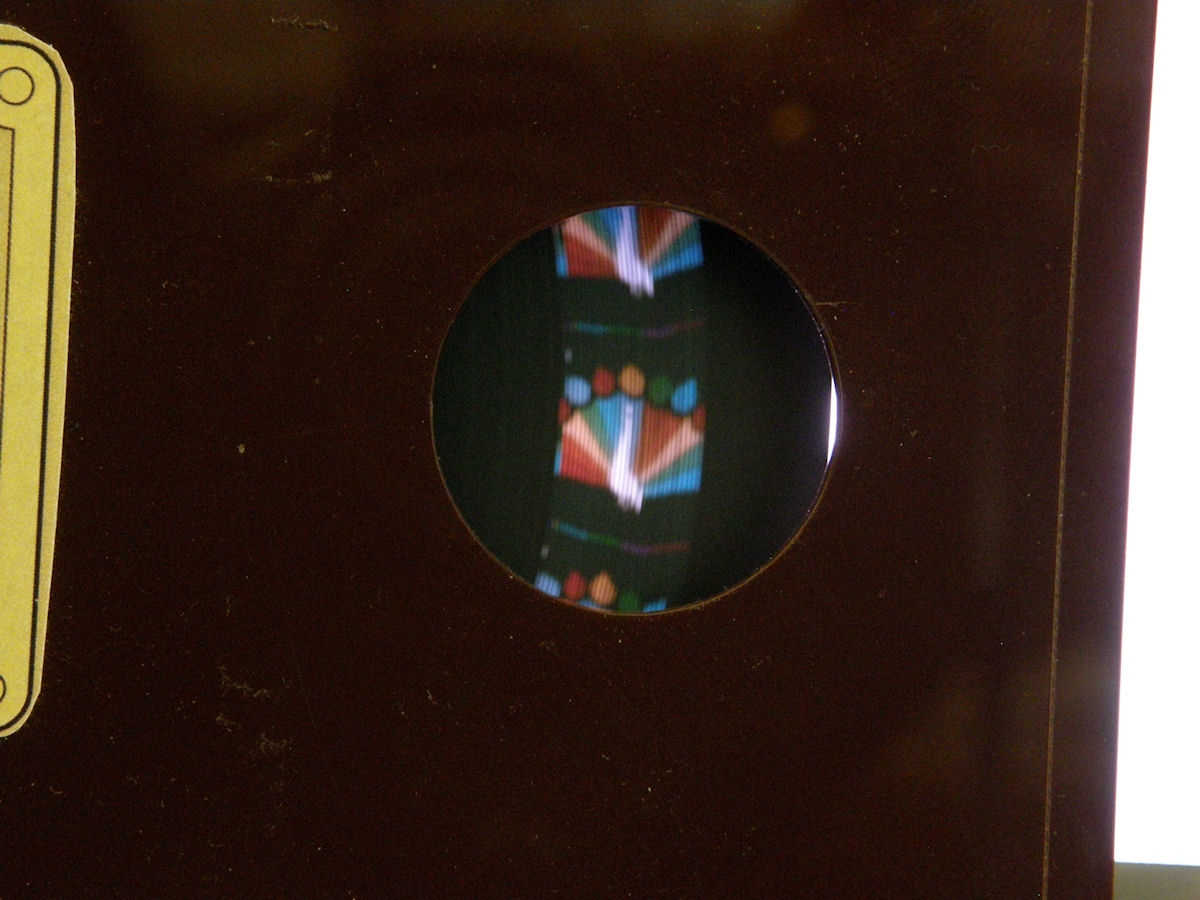
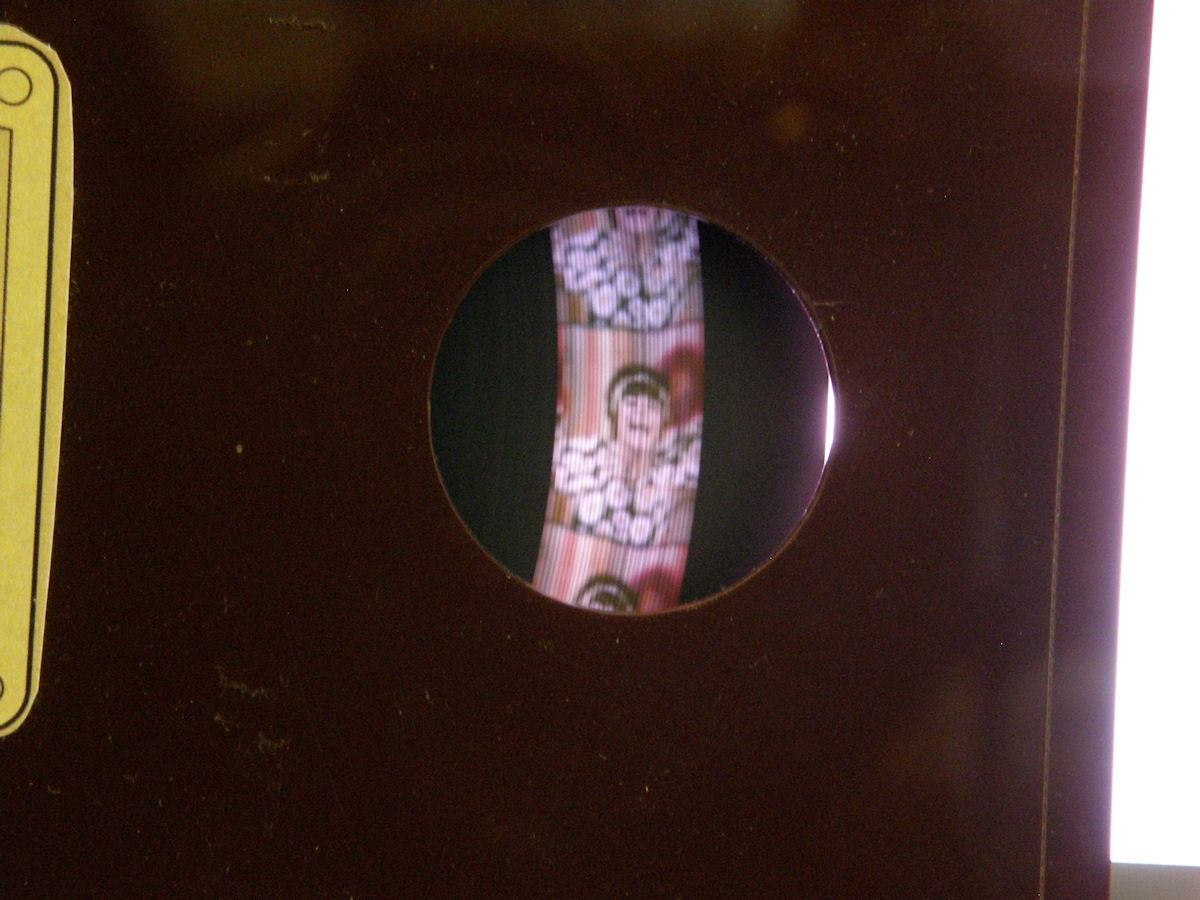

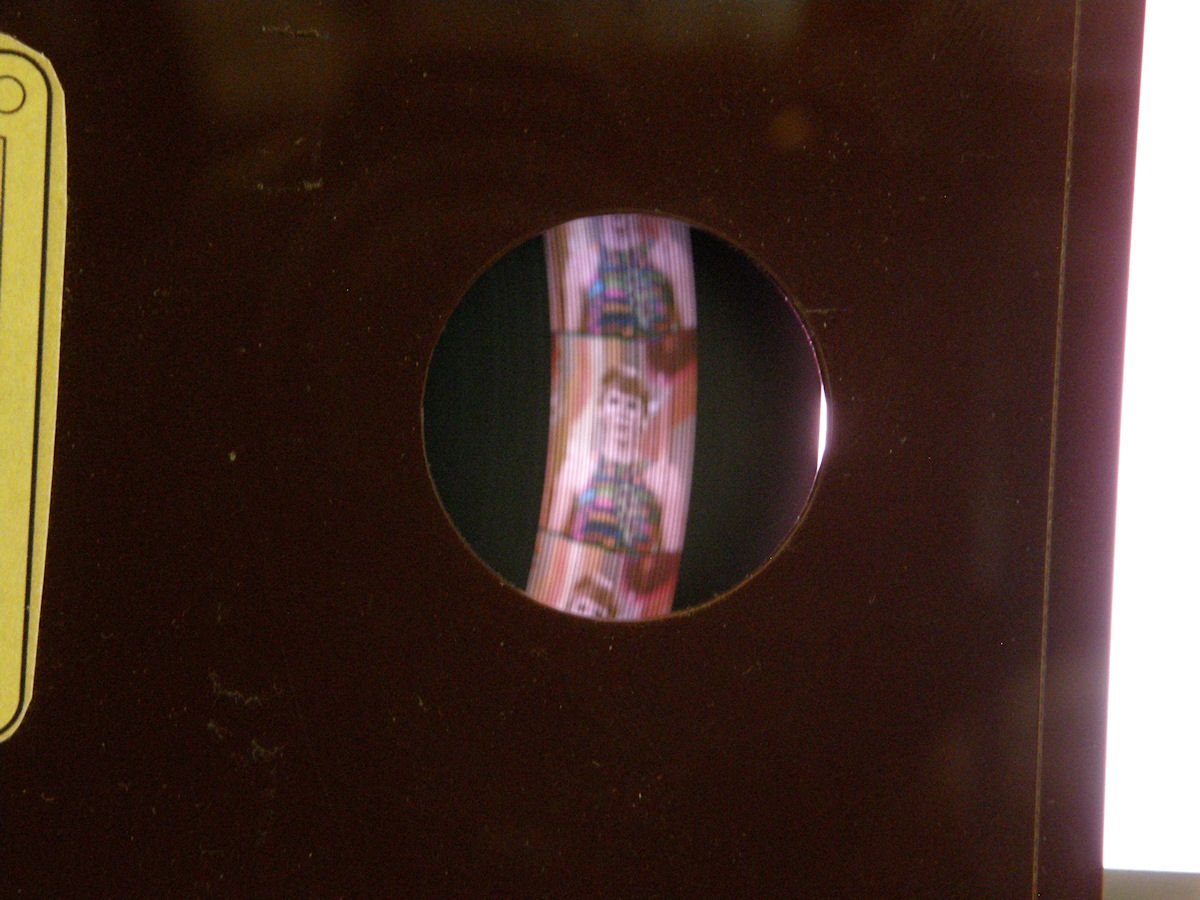

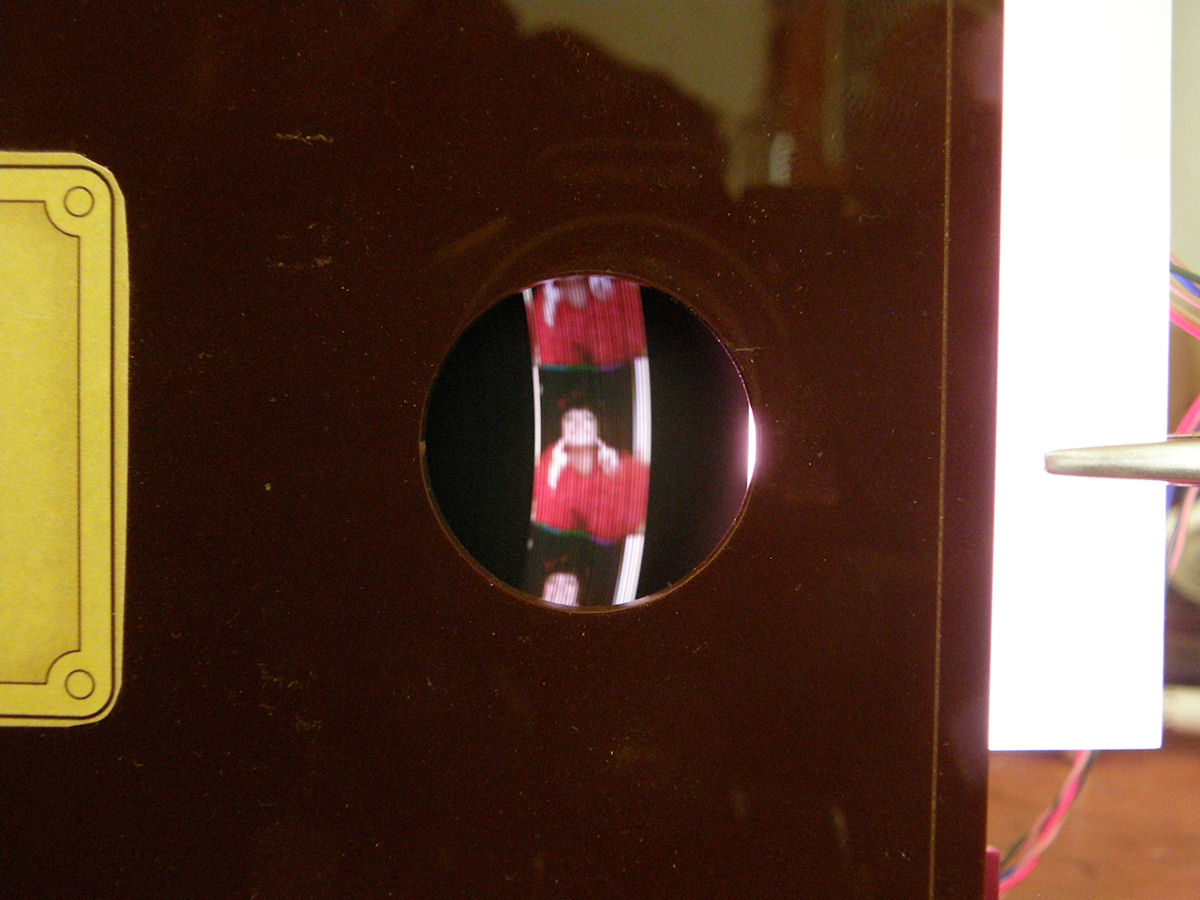
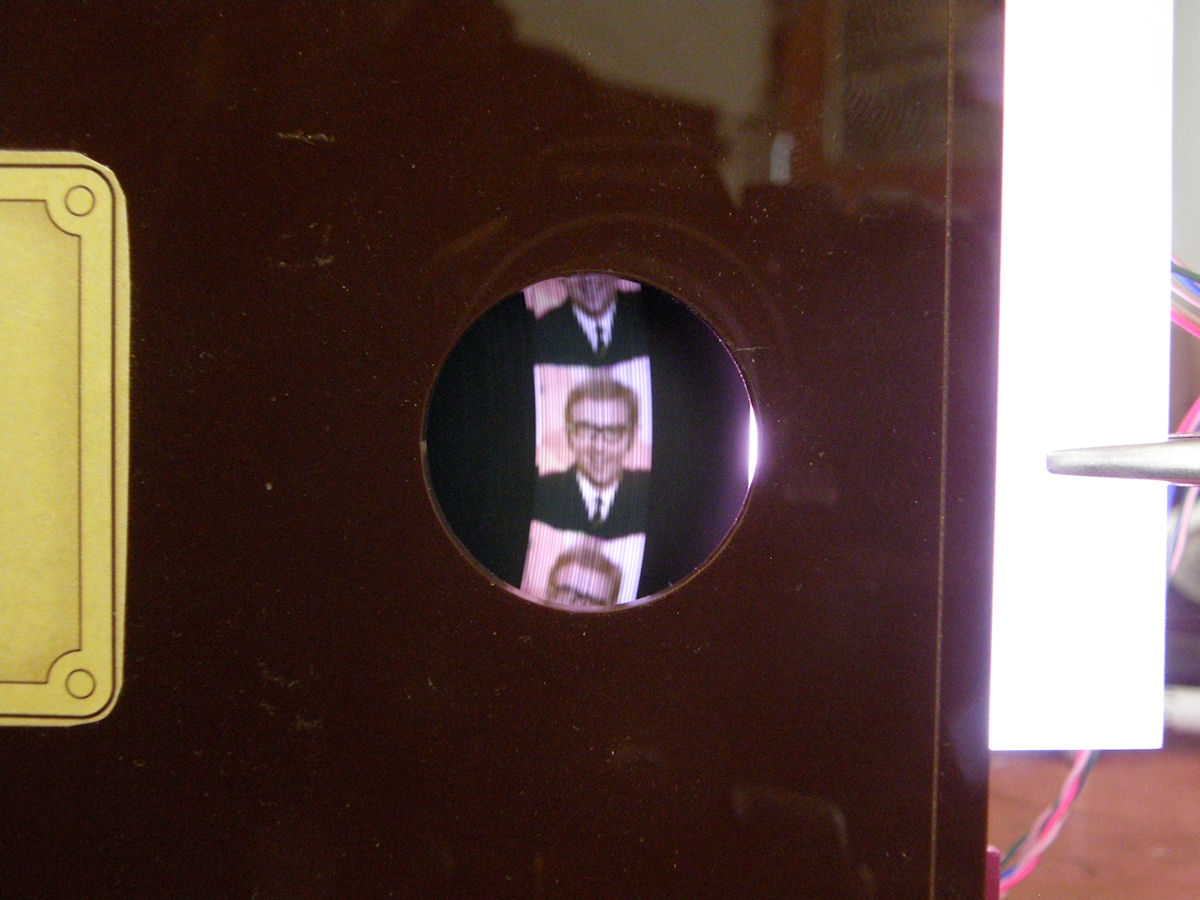
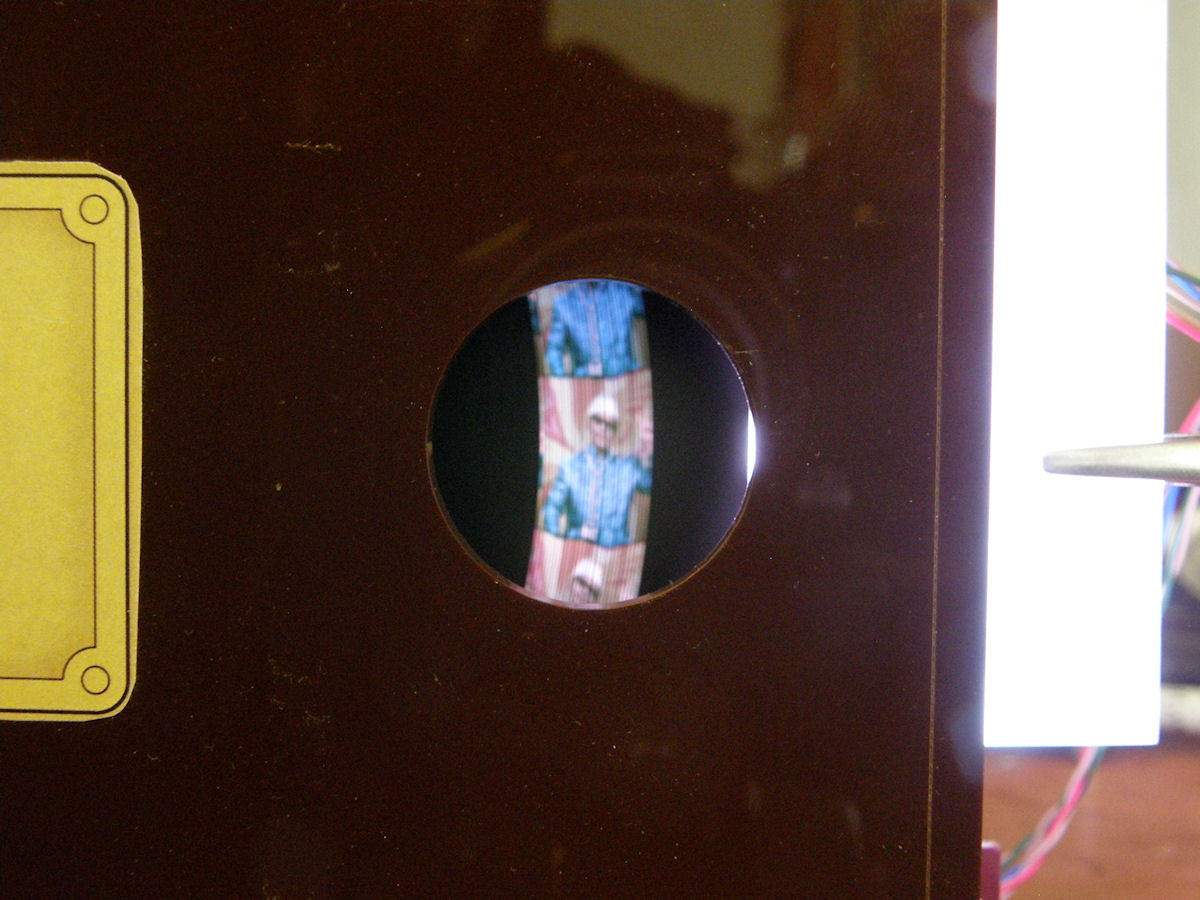
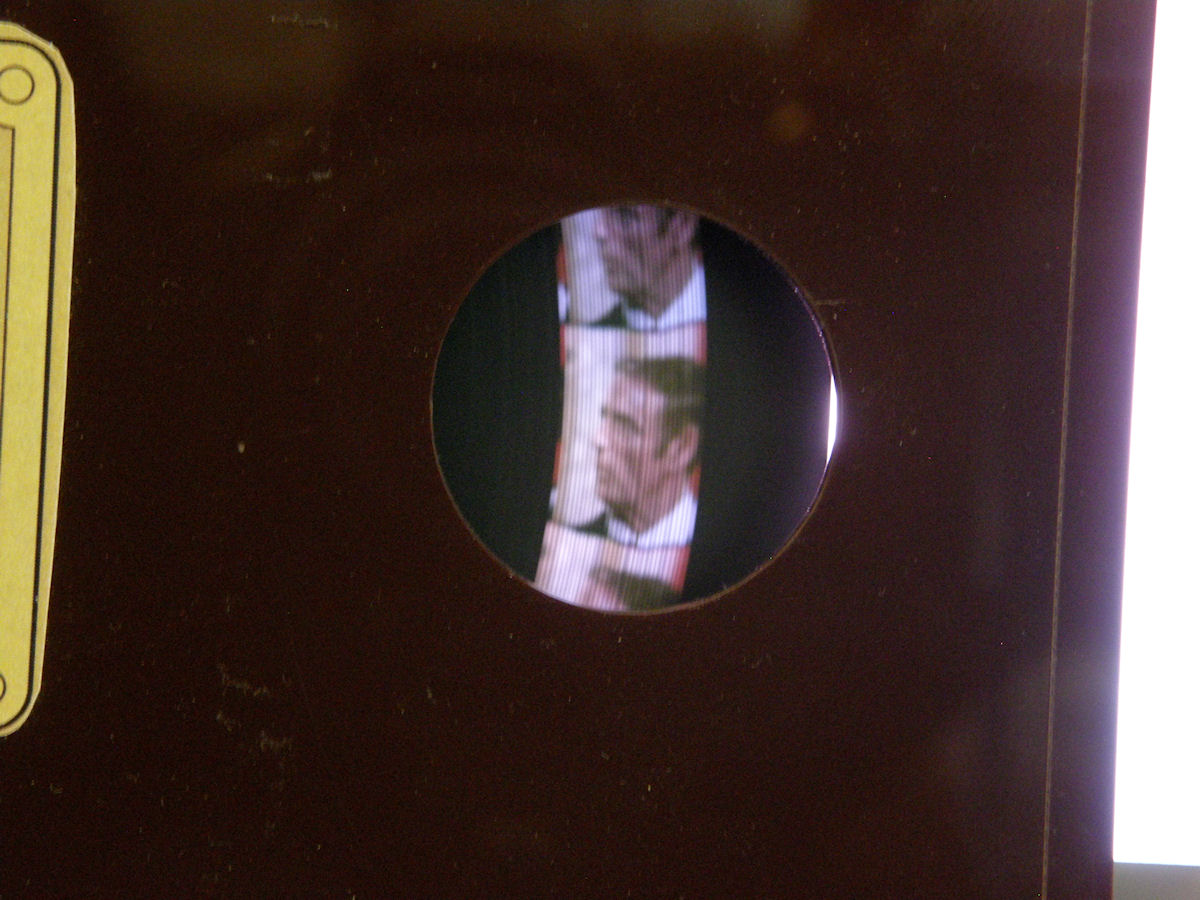
Loooooking Goooooood! - 20160214 In this series of photos, I have added a second diffuser behind the first. Then I cranked up the drive to the LEDs to make up for the additional light losses. The color purity is near perfect now. The two diffuser have removed the hot spot from the center of the image and seems to have also eliminated the pebbling effect of the single diffuser. The quality is astounding for the tiny amount of information involved. Though the still photographic images can appear quite good, when viewed live, the twelve and a half frames per second flicker is very noticable and annoying. The digital camera integrated several frames together over a half second exposure time. For all of these shots, I paused the DVD playback to prevent motion blurring. After running for a couple of hours now, the Nipkow disk has flattened out a bit. Note that the W distortion has gotten a little bit smaller since when we started. 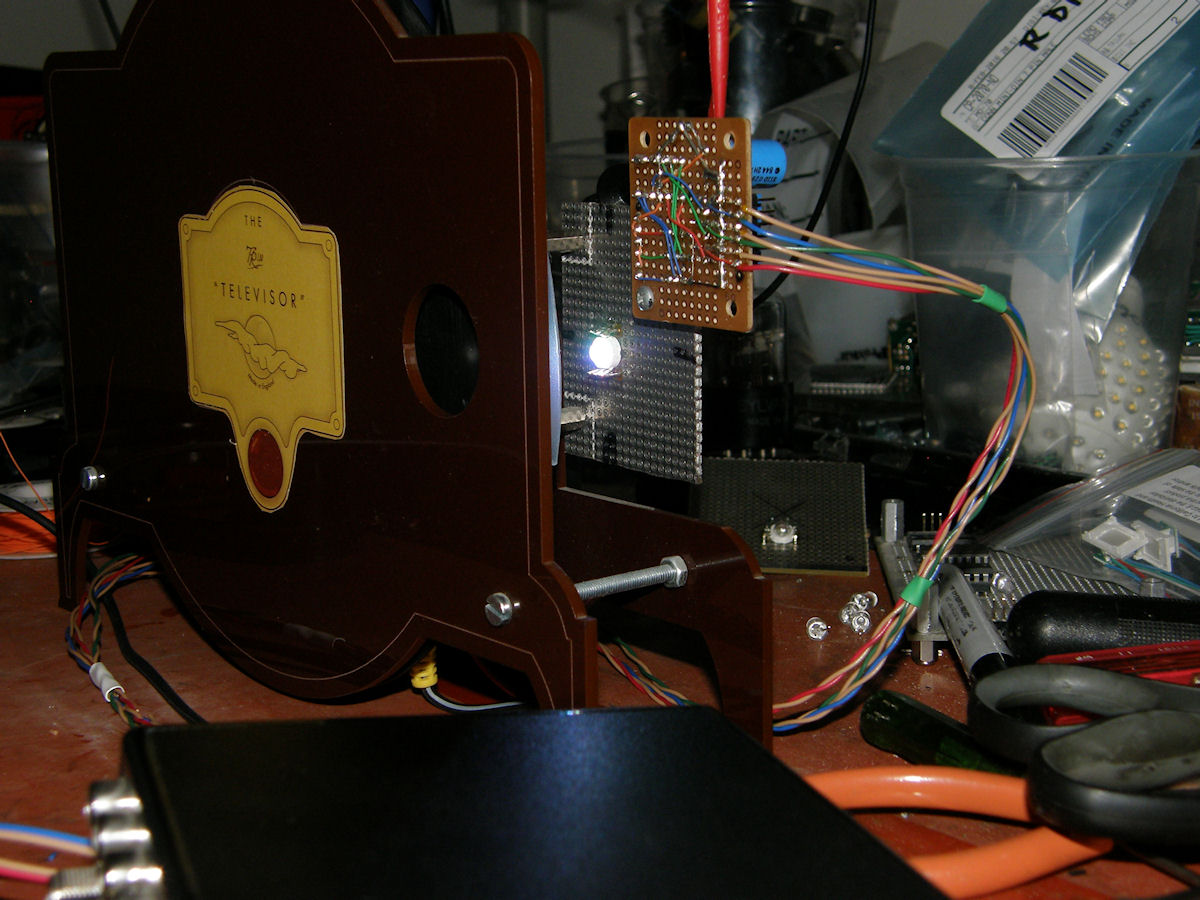


The test bench set up - 20160215 You may be wondering exactly where all this magic happens. Well, wonder no more! Here are a few more views of the Televisor on the bench. In the first photo, we see the new high power LED, the driver board and the new permanently attached input cable. Can't lose it now! The second photo is looking down into the Televisior in its final set up form. We see the second diffuser between the LED and the first diffuser. This spreads the light very evenly now. We also see the warped Nipkow disk which is responsible for the geometric distortion we are currently experiencing. New disk options are being explored. The third photo shows the Televisor, my general purpose third hand tool holding the diffuser and the Aurora World Converter. A messy bench is a prolific bench. This project was made possible by [John Logie Baird], the [Narrow Band Television Association] and [Aurora Design]. Special thanks to [James Hawes] for our recent email conversations on this and other fascinating subjects. Thanks, James, for triggering a revisit to this fun and chalenging project. It's now some one else's turn. Build a mechanical TV and tell us all about it. Help keep these precious historical arts and skills alive. If you like, I can even post your article here for all to enjoy. I hope you learned something today. Please share my project articles with all the curious people you may know. This is an ongoing project. Check back occasionally for updates. [HOME] [ELECTRONICS PROJECTS] [PART 1] Created: February 7, 2016, Last updated: February 15, 2016 |